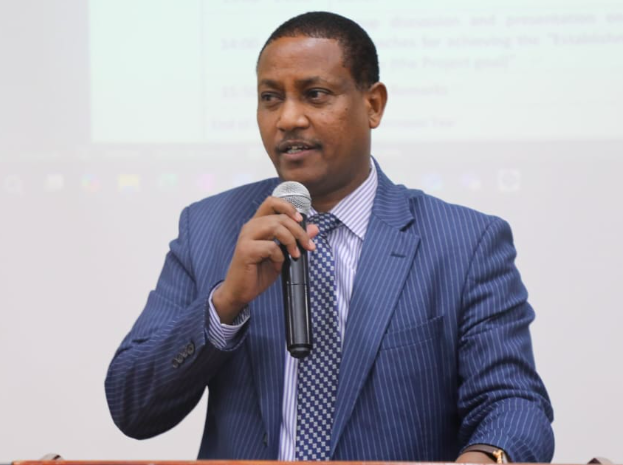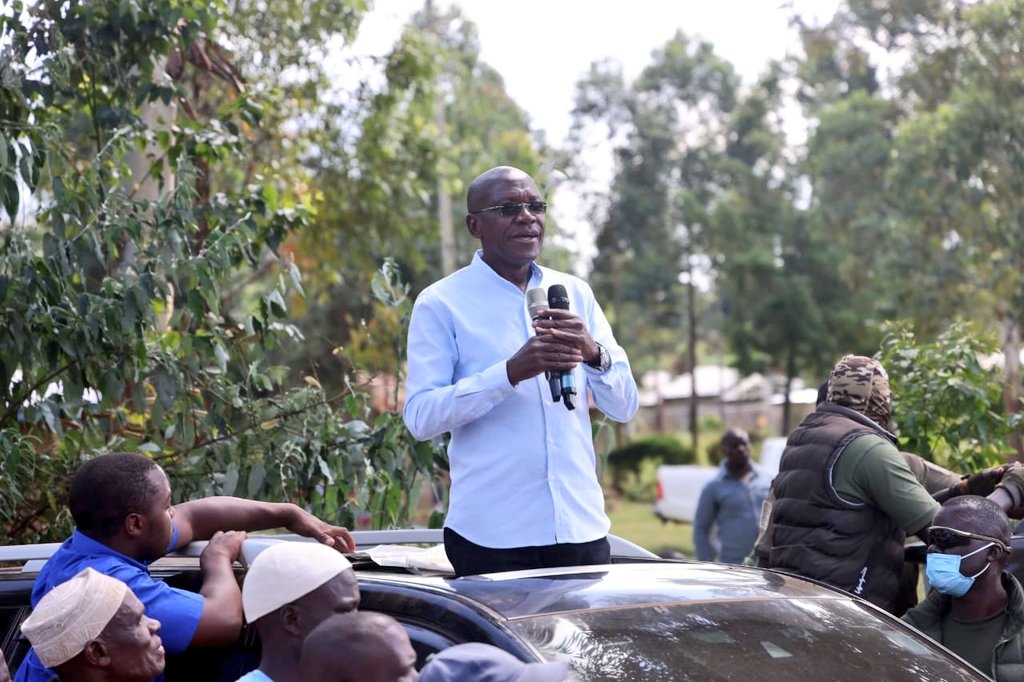
 National Environment Management Authority Director General Mamo Mamo/FILE
National Environment Management Authority Director General Mamo Mamo/FILEThe National Environment Management Authority has directed counties to comply with the new waste management laws.
Nema Director general Mamo Mamo said the devolved units are supposed to put in place the necessary structures to support the implementation of the Sustainable Waste Management Act that was signed into law on July 8, 2022.
“Nema has written to counties to comply with the Sustainable Waste Management Act 2022,” Mamo said.
Under the Act, counties, in consultation with relevant national government agencies, the public and other stakeholders, have to develop county legislation within two years of the coming into operation of the Act.
Counties may make regulations prescribing the use of land within the jurisdiction of the county government for waste management and investment in sustainable waste management, including waste collection, separation, treatment, processing, recovery and sanitary final disposal of waste.
The devolved units are also supposed to establish material recovery facilities.
“Counties are supposed to come up with material recovery facilities so that waste can be segregated and then disposed of in a landfill. But only a few of the counties have come up with material recovery facilities,” Mamo told the Star.
The Act mandates counties to establish material recovery and recycling facilities and sanitary landfills for the disposal of non-recoverable waste; incentivise the collection and separation of waste at source in neighbourhoods and informal settlements.
A material recovery facility allows for the final sorting, processing and preparation of recyclable materials from waste streams for resale to end-user manufacturers.
Nema has been encouraging private sector investment in material recovery facilities to replace traditional dumping sites, driving the transition to a circular waste management model and promoting environmentally sound practices.
Mamo said through extended producer responsibility (EPR), the authority will generate funds to set up a material recovery facility in all 47 counties.
Extended producer responsibility makes producers, importers and brand owners responsible for the life cycle of their products.
It involves mandatory Nema registration, establishing take-back schemes for product collection and management, paying EPR fees to fund the system, submitting detailed EPR plans and adhering to strict annual reporting requirements to Nema.
The goal is to reduce pollution and promote the circular economy through the polluter pays principle.
Mamo said the authority will soon work with Nakuru county on the modalities of material recovery facility.
Already, a material recovery facility has been constructed in Taita Taveta county through a UN-habitat initiative known as the Go Blue.
Mamo said the authority has come up with a prototype of material recovery facility.
Counties are also supposed to ensure cities plan for waste management facilities as part of city expansion; prepare a county waste management plan and quarterly monitoring reports for cities, urban areas, municipalities and administrative units.
The devolved units are also tasked with submitting annual reports to the authority and county assembly on the implementation of the county waste management plan and maintain data on waste management service provision by waste management service providers.
Under the new plan, five per cent of the waste will be incinerated, 30 per cent recycled and 60 per cent turned into manure. Only five per cent will go to landfills.
All waste service providers will collect, handle and transport segregated waste according to the law.
A provider who violates the law will be committing an offence and on conviction could be fined as much as Sh50,000, or imprisoned for six months. Or both.
The hazardous waste will be handled separately and managed according to the Environmental Management and Coordination Act, 1999 and other laws.
Hazardous wastes are those with the potential to harm human health or the environment.
Producers of waste will also be held responsible.
Under the new law, those who fail to segregate waste at the household level will be fined Sh20,000, jailed six months or both.
Segregating wastes makes sorting, recycling, reusing and reducing waste easier. Much less goes into landfills.
The Waste Management Regulations 2024 requires waste generators to store waste in colour-coded bins.
The green bin is meant to hold organic waste, black (general waste) and blue recyclables.
















